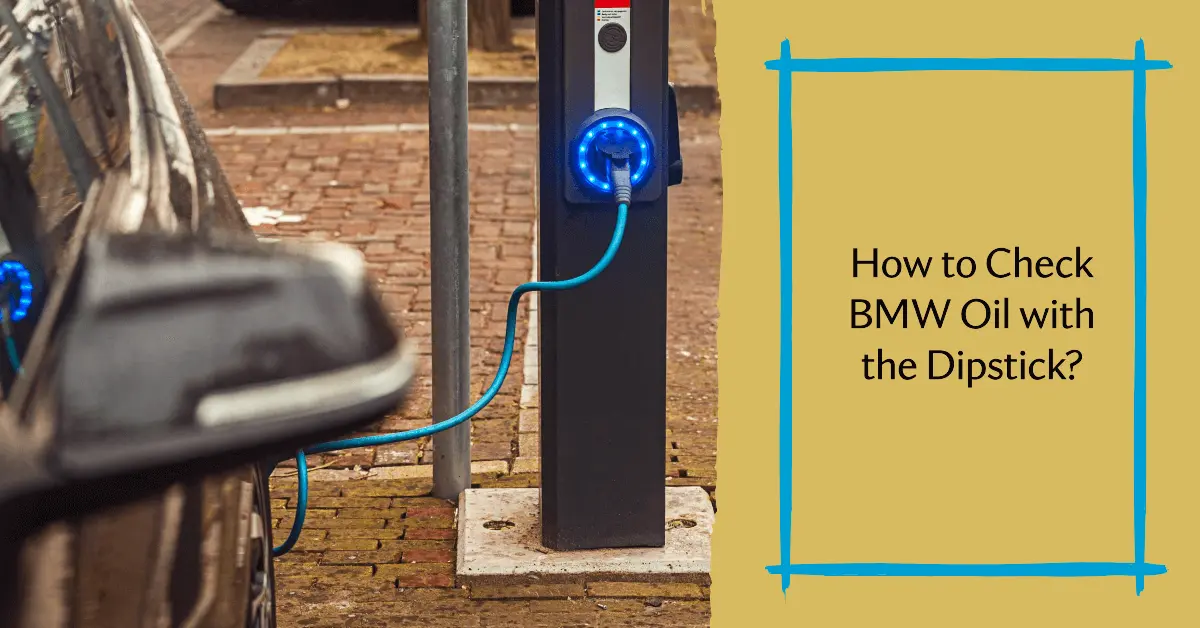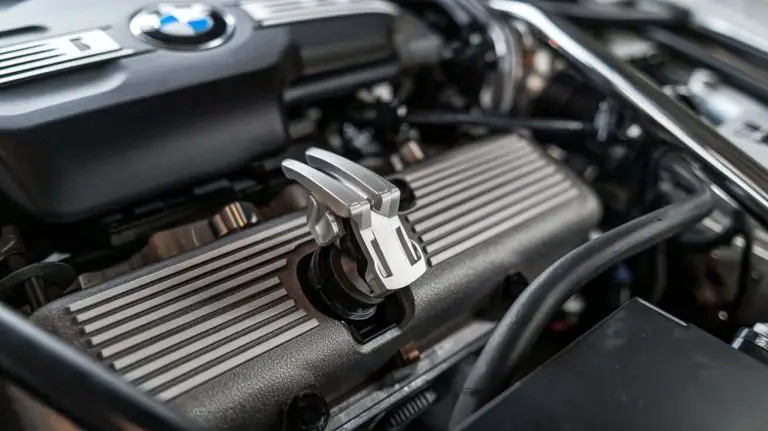How to Check BMW Oil with the Dipstick – A Complete Guide
Checking your BMW’s engine oil level regularly is one of the easiest and most important maintenance tasks you can do to keep your vehicle running smoothly. But if you’ve only ever relied on the electronic oil monitor in modern BMW models, you may be wondering how to locate and use the manual dipstick to check oil instead.
In this comprehensive guide, we’ll cover everything you need to know about checking BMW oil with the included dipstick, from understanding why it’s important to step-by-step instructions and tips for adding oil when low. Read on to become an expert in monitoring this vital fluid in your Ultimate Driving Machine.
Why Check BMW Oil Levels Regularly?
Before learning how to go about it, it’s important to understand why you need to check BMW oil at all. Engine oil is essentially the lifeblood that keeps your car working properly and prevents expensive damage.
Here are some key reasons to check and maintain oil:
- Lubricates – Oil coats moving metal components in the engine so parts glide instead of grind, reducing wear and tear. Low oil can lead to metal on metal friction and overheating.
- Prevents Corrosion – Detergent components in engine oil also help to clean parts and limit corrosion from water and combustion acids.
- Seals – Oil seals piston rings to prevent leakage in the engine cylinders. Without oil, compression drops.
- Cools – Oil dissipates heat from hot engine components to regulate operating temperature. If oil is low or thins out too much from heat, cooling suffers.
- Quiets Operation – Proper oil levels reduce engine sound and unwanted vibrations by dampening moving gears and shafts. Badly worn engines will become very noisy.
Regularly checking your car’s oil will help you avoid problems related to loss of viscosity, operating temperature changes, corrosion, leaks or consumption before they become serious and start impacting engine performance. So let’s go over how to do so using your BMW’s dipstick.
Electronic Oil Monitor vs. Dipstick on BMWs
Newer BMW models use an electronic Condition Based Service (CBS) system with an automatic oil monitor that calculates remaining oil life left and oil level and will display warnings on the dashboard when low. However, most BMWs also still include a manual oil dipstick for redundancy and in case the electronic system fails or you want a second opinion.
The dipstick is useful as a backup, gives you immediate progress after topping off oil, and is often the only option on some older BMW models. Let’s explore how to locate your dipstick and use it properly to regularly check your BMW’s engine oil.
Where to Find the Oil Dipstick in Your BMW
Locating the engine oil dipstick on a BMW is the first step. While placement varies amongst BMW engine layouts, in most passenger BMW cars the dipstick is towards the back of the engine bay on the left-hand side. The dipstick handle is typically colored yellow for high visibility, with one located in the transmission fluid reservoir and a separate one for the engine oil reservoir.
Check your owner’s manual to confirm the unique location in your vehicle. Some key common dipstick locations in BMW models include:
- 3 Series (E90) – Left-side of engine bay behind power steering reservoir
- 5 Series (E60) – Behind the engine on the left-side below cylinder head cover
- 7 Series (E65) – Under plastic engine cover, to the rear on left-hand side
- X3/X5 SUV (E83, E70) – Towards firewall behind engine on left side
Once you find your yellow handled engine oil dipstick, let’s go over how to use it to properly check levels.
Step-by-Step Dipstick Oil Check Procedure for Your BMW
The specifics can vary a little for different BMW motors, but the basic process for checking oil with the included dipstick follows this reliable procedure:
Step 1 – Turn Vehicle Off
Oil readings are most accurate when the engine is off and oil has a few minutes to drain back to the oil pan sump. So begin by turning off your BMW’s engine.
Step 2 – Find and Pull Out Dipstick
Pop open your hood and locate the yellow handled engine oil dipstick, then gently pull it straight up and out from the tube.
Step 3 – Wipe Oil Off on Towel
Before measuring, wipe any oil clinging to the dipstick clean using a paper towel or shop rag so it doesn’t affect the reading.
Step 4 – Fully Reinsert Dipstick
Push the clean dipstick fully back into the opening until it seats all the way in the tube to take an accurate new measurement.
Step 5 – Check Oil Level on Dipstick
Remove the dipstick once more and note the oil film level. Look for the minimum and maximum markers towards the tip – the oil film should be in between the two.
Step 6 – Add Oil if Low
If the oil level is at or below the minimum marker, add some oil right away. We’ll cover tips for topping up oil on your BMW later on.
And that’s the basic technique for checking BMW engine oil with the included dipstick. Next we’ll go over some best practices for accurate readings and address common questions.
Tips for Accurate Manual Dipstick Readings
To help ensure you get precise and consistent oil measurements with the BMW dipstick, keep these recommendations in mind:
- Park on Level Ground – This helps prevent oil sloshing to one side and throwing off the reading. Even small angles can shift oil levels.
- Allow Oil to Drain Down – After driving, give hot oil a few minutes to drain from engine passages back down into the pan before checking.
- Be Consistent – Always check using the same timing and procedures for best accuracy in oil level trend monitoring.
- Consider Operating Temperature – Oil expands when hot, and levels may temporarily show higher than cold engine readings even when volume is the same.
- Wipe Clean – Don’t let existing oil residue on the dipstick skew your readings up. Always dry it completely before reinserting.
Now that you know how to accurately check BMW engine oil, what should you do if the dipstick shows its running low? Let’s go over a few tips for safely adding more oil.
Adding Engine Oil to Your BMW
If your manual dipstick check shows oil levels nearing or below the minimum mark, you’ll need to add some fresh oil. Here are some tips:
Turn Engine Off and Let Cool – Only top up oil when the engine is off and cooled somewhat so oil doesn’t spill and to prevent burns. Hot oil also foams up more making it hard to read fill levels.
Locate Oil Filler Cap – Generally towards the rear-left of the engine bay, unscrew the cap to access the opening for adding clean oil.
Add Approved Oil Slowly – Using a funnel, pour in BMW approved oil types slowly, periodically checking the dipstick to avoid overfilling. Adding around 1 US quart at a time until in range is smart.
Replace Filler Cap – Immediately replace the oil filler cap once your done adding oil to prevent leaks and debris getting in the engine.
And that covers the basics of dipstick oil checks and topping up oil on your BMW! Next we’ll answer some frequently asked questions on monitor accuracy, maintenance schedules and potential issues to watch out for.
Frequently Asked Questions on Checking BMW Oil
Here are answers to some common BMW owner queries when monitoring engine oil levels manually or electronically:
Which is More Accurate – Dipstick or Electronic Monitor?
BMW electronic oil level readings account for operating factors like temperature and don’t involve human error, but can fail electronically. The dipstick offers mechanical redundancy if in doubt or for older models. Use both when possible.
How Frequently Should I Check My Oil?
Checking BMW engine oil monthly using the dipstick is wise for monitoring usage trends. Also check levels before embarking on long road trips or periods of performance driving when oil is worked harder.
When Do I Need an Oil Change?
While the Condition Based Service monitor tracks remaining oil life based on driving conditions and roughly equates to needing an oil change around every 10,000 miles or annually, severe usage can shorten this. Noticeable oil darkening, thickness changes or frequent topping off are signs a change is due.
What Common Oil Issues Should I Watch For?
Be vigilant for oil leaks underneath the engine, smoke from the exhaust on start up or acceleration (indicating burning oil), or dipstick levels dropping rapidly between changes indicating high consumption. Address any unusual symptoms promptly before engine damage can occur.
So in summary, knowing how to manually check and add BMW engine oil with the dipstick provides you useful mechanical redundancy to keep this essential fluid at healthy levels, prevent serious wear issues and identify potential problems early.
Best Practices to Maintain Proper BMW Oil Levels
Follow these top tips for staying on top of your BMW motor oil health between changes:
- Check oil monthly using both the electronic monitor and manual dipstick
- Always assess when engine is cold after sitting and on level ground
- Use the dipstick to top up and recheck after adding oil
- Address sudden drops in oil levels or regular consumption quickly
- Service oil changes according to CBS monitor or darker oil color
- Fix any oil leaks promptly and use approved oil types
Monitoring oil level routinely by understanding how to check BMW oil manually with the dipstick and electronically provides invaluable peace of mind for the engine health of your Ultimate Driving Machine.
Conclusion – Don’t Neglect Checking Your BMW’s Oil Level
While the BMW CBS system simplifies oil change monitoring in modern models, having confidence accessing and reading your engine’s manual dipstick provides backup reassurance and more control over keeping this vital fluid at optimum levels between services.
Checking oil through either method takes little time or effort, offers early issue detection, prevents thousands in potential engine damage costs, and gives you visibility to optimize changes. So be sure not to overlook this most basic maintenance element on your precision BMW vehicle.







